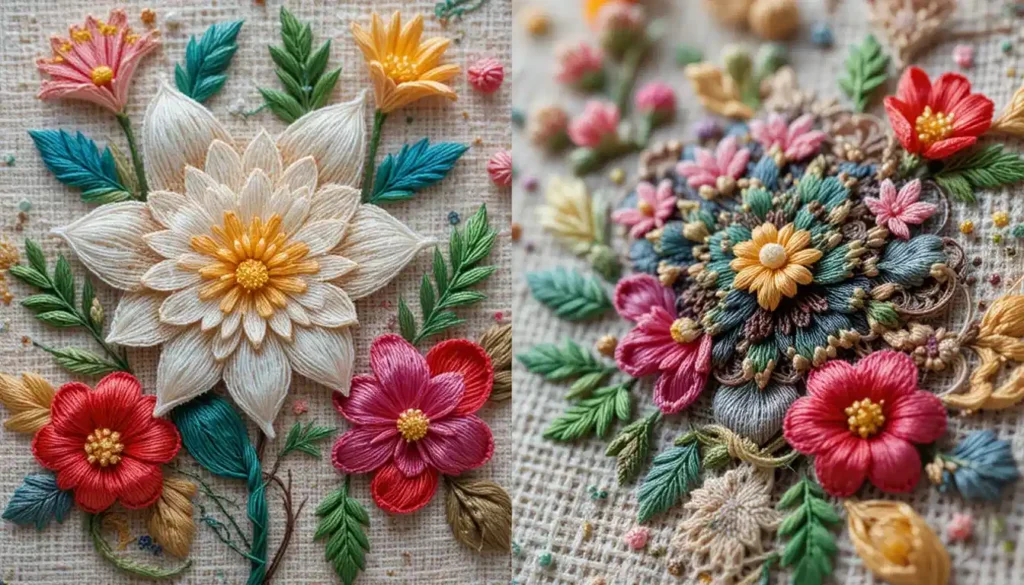Imagine stepping into the vibrant souks of the UAE, where centuries of tradition are woven into every thread and stitch. The scent of oud lingers in the air, the call to prayer booms gently in the background, and stalls brim with handcrafted garments each piece echoing the craftsmanship of generations past. Here, clothing isn’t just fashion; it’s storytelling in fabric form.
But with modern commerce blending into ancient trade routes, how can you tell the difference between a truly handmade treasure and a mass-produced imitation? Where should you go, what should you look for, and how can you be sure your dirhams are supporting local artisans rather than fast-fashion factories?
This guide is your trusted companion through the heart of UAE’s handmade clothing culture. From discovering the right souks and boutiques, to decoding the signs of genuine craftsmanship and knowing how to buy ethically, we’ve covered everything to empower your journey.
By the time you finish reading, you’ll not only know how to shop for handmade clothes in the UAE but you’ll also understand the deep cultural value behind each stitch. Whether you’re a traveler, an expat, or a local enthusiast, you’ll walk away ready to shop with purpose, style, and respect for tradition.
Why Choose UAE Handmade Clothing?
Cultural Heritage & Authenticity
Handmade clothing in the UAE is more than just fashion it’s a living expression of the nation’s cultural soul. Rooted deeply in Emirati and Bedouin traditions, garments such as the abaya, kandura, and intricately embroidered shawls reflect generations of storytelling, artistry, and resilience.
Institutions like the Emirates Heritage Club and the Sharjah Institute for Heritage have long emphasized the importance of preserving textile traditions. From the handwoven sadu fabrics of Bedouin tribes to the fine silk stitching seen in ceremonial attire, these clothes connect wearers to the UAE’s identity, history, and values.
“When you wear handmade Emirati clothing, you don’t just wear fabric you wear a story.”
Unrivaled Craftsmanship & Quality
Unlike mass-produced garments, UAE handmade clothing is defined by skill, patience, and passion. Every detail from hand-stitched hems to delicate embroidery reflects the artisan’s dedication to their craft.
Whether it’s a richly adorned jalabiya or a minimalist bisht, these pieces are designed to last. Durability, uniqueness, and soul set them apart from factory-made fashion. You’ll often find subtle design elements like tribal patterns or calligraphy that are impossible to replicate in bulk production.
Supporting Local Artisans & Communities
Your purchase has power. Every dirham spent on handmade clothing directly benefits local families, women entrepreneurs, and small workshops many of whom operate out of traditional homes or community co-ops.
These purchases help sustain endangered crafts and promote the survival of age-old techniques that might otherwise be lost in today’s globalized market. In fact, many UAE-based social enterprises and cultural initiatives prioritize empowering women artisans, providing them with income, training, and platforms to showcase their heritage.
Look out for cooperative-run pop-ups or artisan booths in cultural festivals like Al Dhafra Festival or Sikka Art Fair where tradition meets social impact.
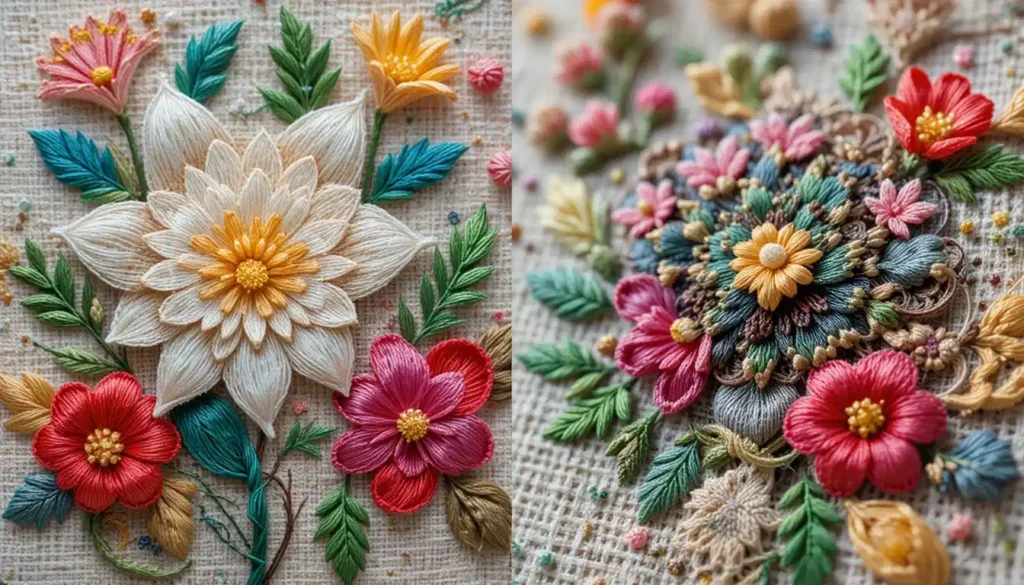
A Unique Value Proposition
When you choose handmade over mass-produced, you’re not just buying a piece of clothing you’re investing in a piece of living heritage.
- Ethically sourced and often sustainably produced
- Free from industrial shortcuts or synthetic imitations
- Each piece is one-of-a-kind, made with intentionality
Avoid the typical tourist traps and instead seek out workshops tucked away in heritage villages, artist collectives, or women-led cooperatives. These hidden gems offer more than fashion they offer connection, authenticity, and a shopping experience that’s truly unforgettable.
Types of Traditional UAE Handmade Clothing & Textiles
Embracing Culture Through Clothing
Traditional Emirati garments are more than functional attire they are expressions of identity, values, and heritage. Carefully handcrafted and often passed down through generations, each piece holds meaning that transcends trends. Whether worn daily or on special occasions, these garments reflect the UAE’s enduring respect for modesty, hospitality, and craftsmanship.
Today, many designers in the UAE are reinterpreting these traditional pieces with modern flair blending the past with present-day elegance. According to Emirati fashion curator Dr. Reem El Mutwalli (The Zay Initiative), “Traditional dress in the UAE isn’t static. It’s a constantly evolving narrative that weaves together tradition, innovation, and personal expression.”
Key Garments & Textiles of the UAE
| Garment/Textile | Description/Purpose | Key Features/Materials | Cultural Significance |
| Abaya | A loose, flowing full-length robe worn by women over everyday clothes. | Typically black; often embellished with embroidery, crystals, lace, or beadwork. Common fabrics include crepe, nida, and georgette. | Symbolizes modesty, grace, and Emirati femininity. Worn in public and during religious or formal events. |
| Kandura (Thobe/Dishdasha) | A long robe worn by men, traditionally in white. | Lightweight fabric like cotton or poly-blend. May feature subtle embroidery around the neck and sleeves. Worn with ghutra and agal. | Reflects dignity, national pride, and is worn daily and on formal occasions. |
| Jalabiya | Comfortable, free-flowing dress worn by women at home or informal gatherings. | Colorful and ornate, made of cotton, silk, or linen. Often adorned with sequins or embroidery. | Represents comfort, hospitality, and cultural identity in everyday life. |
| Sheila | A long rectangular scarf used by women to cover the hair. | Lightweight fabrics such as chiffon or silk, can be plain or richly decorated. | Essential for modesty and a canvas for personal style. Often color-coordinated with abayas. |
| Ghutra | A square headscarf worn by men, folded and fastened with an agal. | Typically white for summer or red-and-white checkered for winter (shemagh). Made from breathable cotton. | Practical and symbolic used for sun protection, and marks tradition and masculinity. |
| Sadu Weaving | A Bedouin hand-weaving craft used in garments and textiles. | Features geometric patterns in red, black, white, and green. Made from wool, camel, or goat hair. | Recognized by UNESCO as a cultural treasure. Embodies Bedouin nomadic heritage and storytelling. |
| Al-Qasab Embroidery | Fine hand embroidery with metallic threads. | Gold or silver threads embroidered into dresses, especially wedding attire or ceremonial robes. | Signifies wealth, celebration, and artisanal mastery. Found in high-end traditional garments. |
Expanding the Tradition: Accessories & Children’s Clothing
Handmade craftsmanship in the UAE extends beyond adult attire. Children’s traditional clothing, such as mini kanduras and embroidered jalabiyas, often mimic adult styles while incorporating playful patterns and lighter fabrics for comfort.
Similarly, handcrafted accessories like beaded sandals (na’al), woven handbags, or embroidered clutches complement traditional outfits and serve as beautiful standalone keepsakes. Many of these accessories are produced by women-run cooperatives and are sold in community markets or cultural festivals.
Tip: Visit venues like the Ripe Market or Al Fahidi Historical Neighborhood to discover authentic, artisan-made accessories and children’s wear that you won’t find in mainstream malls.
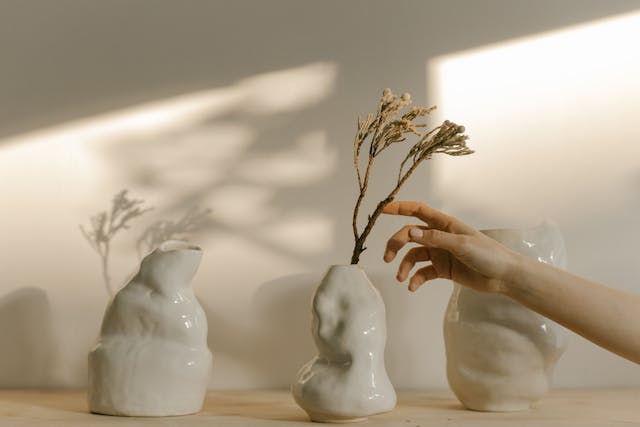
Where to Buy Handmade Clothes in the UAE
Finding truly authentic handmade clothing in the UAE requires more than just a stop at the nearest shopping mall. It’s about immersing yourself in the cultural heartbeat of the Emirates through bustling souks, serene heritage villages, curated boutiques, and hidden workshops where traditions thrive. Here’s where and how to start your journey.
Traditional Souks & Markets
The UAE’s souks (traditional marketplaces) are cultural experiences in themselves places where negotiation is part of the art and every stall holds a potential treasure. These markets offer a vibrant mix of handcrafted clothing, textiles, and accessories.
- Deira Old Souk & Dubai Textile Souk (Bur Dubai):
Located along the Dubai Creek, this area brims with fabric stores, hand-embroidered garments, and accessories. Expect narrow lanes, aromatic spice stalls, and friendly bargaining. - Souk Al Bahar (Downtown Dubai):
A modern take on the traditional market, this souk blends luxury and authenticity. You’ll find curated boutiques offering high-quality handmade abayas, accessories, and gift items just steps away from the Burj Khalifa. - Central Souk (Blue Souk), Sharjah:
With its stunning Islamic architecture and over 600 shops, this iconic landmark is a haven for those seeking unique textiles, jalabiyas, and handicrafts from across the Arab world. - Souk Al Zafarana, Abu Dhabi Central Market:
Known for its focus on authentic Emirati goods, this market is perfect for finding traditional clothing and accessories crafted by local artisans.
Expert Tip: Many stalls in older markets operate with cash only. Carry small denominations of AED to make transactions smooth and respectful, especially with elder shopkeepers.
Heritage Villages & Cultural Centers
To truly understand the value behind handmade garments, immerse yourself in the traditions that birthed them. These sites offer context, craftsmanship, and a chance to meet artisans directly.
- Dubai Global Village (seasonal):
A multicultural festival park where local and regional artisans exhibit handcrafted fashion, jewelry, and textiles. - Abu Dhabi Heritage Village:
A step back in time, where visitors can watch live demonstrations of weaving, embroidery, and other traditional skills. - Al Fahidi Historical Neighbourhood (Dubai):
Known for its restored wind towers and cultural charm, this area houses artisan boutiques, textile galleries, and pop-up shops from local designers.
Expert Tip: Visiting these centers first helps deepen your appreciation of what handmade truly means equipping you to make more informed, respectful purchases later in your shopping journey.
Reputable Local Boutiques & Galleries
For those who prefer curated shopping, established boutiques and designer galleries across the UAE offer a more refined experience:
- These shops often stock contemporary takes on traditional attire think abayas with modern cuts or handwoven textiles integrated into western silhouettes.
- Benefits include transparent pricing, guaranteed quality, and designer credibility. Look for boutiques endorsed by cultural initiatives like the Zay Initiative or Dubai Design District (d3).
Popular boutique names to explore include:
- Shatha Essa, Al Mraikn, Abaya Lab, and Ghizlan Fashion House crafty (among others).
Online Platforms
In a digital-first world, several UAE-based platforms now offer authentic handmade clothing online. These are great for pre-trip research or post-trip purchases.
- Sites like The Modist, Retold, and Sougha.ae highlight Emirati designers and handcrafted fashion.
- However, verifying authenticity can be tricky. Look for detailed product descriptions, artisan profiles, and photos of the stitching or craftsmanship.
Caution: Avoid buying from generic online marketplaces without clear provenance or cultural context mass-produced “souvenir wear” is often misrepresented as handmade.
Beyond the Souk: Discover Hidden Artisan Workshops
If you’re a true cultural enthusiast, go off the beaten path to uncover where authentic traditions live and breathe in workshops, co-ops, and homespun ateliers.
- Ask local cultural centers or hotel concierges for leads on family-run weaving houses or tailoring collectives.
- Visit women’s associations or rural development programs that empower artisans to sell directly.
- Attend seasonal markets or art fairs such as Sikka Art & Design Festival, Ripe Market, or Sharjah Heritage Days, where craftspeople display limited-edition pieces.
Pro Tip: Try using digital maps or guides with artisan pins (some curated by local cultural foundations) to plan a meaningful shopping route. Many boutique hotels also partner with these artisans and may offer tours or recommendations.
How to Identify Authentic Handmade Quality
In a market where mass-produced items often mimic artisanal aesthetics, knowing how to spot truly handmade quality is essential especially when shopping for cultural garments in the UAE. This section equips you with the practical tools and sensory awareness needed to distinguish genuine craftsmanship from machine-made imitations.
The ‘Touch & Feel’ Guide for Fabrics
When it comes to handmade clothing, your senses are your best ally. Run your fingers across the fabric, hold it to the light, and feel its weight and drape.
Common Handmade Fabrics in the UAE:
- Sadu Weaving: Typically coarse yet durable; you’ll feel the textured ridges of the geometric weft patterns. The wool or camel hair fibers offer a slightly rough but natural warmth.
- Al-Qasab Embroidery: Often stitched on silk or satin, this embroidery has a slight metallic sheen from gold or silver thread, and a raised texture you can feel with your fingertips.
Natural vs. Synthetic:
- Cotton: Cool, breathable, slightly crisp to the touch.
- Silk: Smooth, light-reflecting, and soft with a natural “slip”.
- Wool: Warm, pliable, and slightly rough.
Synthetic fabrics may feel overly smooth, shiny, or stiff lacking the depth and texture of natural fibers.
Scrutinizing Stitching & Seams
Stitching tells the story of how a garment was made. Hand-stitched clothing will rarely be “perfect” and that’s a good thing.
- Irregularity is authenticity: Small inconsistencies in stitch length or alignment indicate human handiwork.
- Seam texture: Hand-finished seams often feel thicker or slightly uneven, with unique folds or overlapping.
- Back side counts: Flip the fabric and observe the underside clean but imperfect finishes often signal hand construction.
Expert Tip: “Look for unique imperfections symmetry is for machines, but character is for hands.” Local Tailor at Al Fahidi Market
Assessing Embroidery & Embellishments
One of the most defining aspects of Emirati handmade fashion is the rich embroidery and ornate details.
- Hand Embroidery: Threads may vary slightly in tension or spacing. Patterns should appear vibrant but not overly “flat” or mechanical.
- Beadwork & Crystalwork: Authentic embellishments use glass, metal, or semi-precious stones. Tap gently glass makes a subtle clink, while plastic remains dull. Beads sewn by hand will show slight spacing differences.
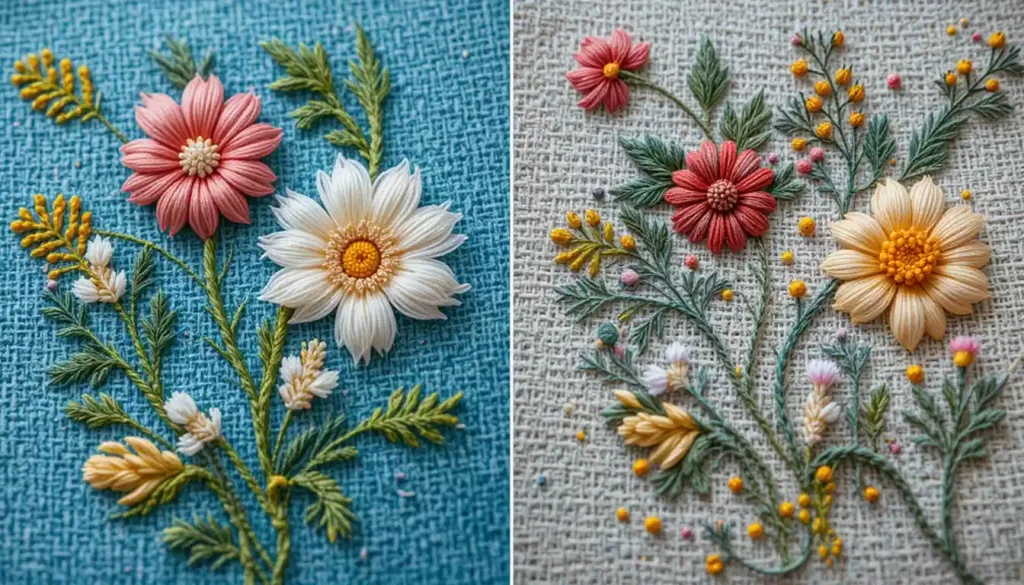
Dye Quality & Color Consistency
Authentic handmade garments often use natural or hand-applied dyes, which appear earthy and nuanced rather than overly saturated.
- Natural dyes: May have soft gradations in color, especially along folds or seams.
- Color bleeding: A quick (and careful) dab with a damp cloth in a hidden spot may reveal unstable dyes a sign of rushed or poor-quality work.
Caution: Always ask the seller before performing any tests. Some delicate fabrics may be sensitive to moisture or friction.
Overall Finish & Attention to Detail
Finally, take a moment to assess the garment as a whole. Authentic handmade items often feel heavier, more grounded, and better balanced.
- Closures: Buttons, hooks, and zippers should be hand-attached and reinforced.
- Hems & Edges: Look for tidy, even hems that may be subtly imperfect.
- Drape & Flow: Lift the garment by the shoulder or collar a well-crafted piece will hang naturally and feel structured.
Differentiation Opportunity: Include a “Visual Authenticity Guide” (PDF or carousel gallery) showing real-life examples of traditional stitching, hand-dyed fabric, and hand-applied embellishments compared to machine-made counterparts.
The Ultimate Buyer’s Checklist for UAE Handmade Clothing
| Checklist Item | What to Look For / Ask |
| 1. Fabric Authenticity | Feel the material: Is it natural (cotton, silk, wool) or overly synthetic? Ask about the source of fabric. |
| 2. Hand-Stitching Details | Look for slight irregularities in stitch spacing perfect uniformity = likely machine-made. |
| 3. Embroidery & Embellishments | Check thread quality, density, and texture. Are embellishments securely attached and made of quality materials (glass > plastic)? |
| 4. Drape & Weight of Garment | Gently lift the piece: Does it fall naturally and feel balanced in weight? |
| 5. Seams & Hems | Inspect seams inside and out are they clean, slightly varied, and hand-finished? |
| 6. Cultural Authenticity | Ask which Emirati tradition or region the design comes from (e.g., Bedouin, Al Ain, Dubai). |
| 7. Artisan or Workshop Info | Ask: “Who made this?” or “Is this locally crafted?” Authentic sellers are often proud to share details. |
| 8. Natural Dye Use | Observe if colors are rich but organic-looking. Inquire if natural dyes were used. |
| 9. Certificate or Artisan Tag | Look for artisan certification, brand tags, or co-op/initiative affiliations (e.g., Sougha, Zay Initiative). |
| 10. Pricing Transparency | Beware of prices too low for handwork. Ask how the price reflects labor and material costs. |
| 11. Return or Care Info | Inquire about care instructions and return policy signs of a reputable artisan or boutique. |
| 12. Supporting Local Economy | Ask: “Does this support a local artisan group or women’s co-op?” Choose sellers who are direct sources. |
| 13. Payment Methods | Carry small bills (especially in souks); some artisans may not accept cards. |
| 14. Time to Produce | Ask how long it took to make the item true handmade garments often require days or weeks of effort. |
Pro Tip: Save this checklist on your phone or print a copy before visiting souks and markets. It’ll help you shop confidently, ask the right questions, and invest in pieces with meaning.
Bargaining Etiquette & Price Negotiation Tips
Understanding the Culture of Negotiation
In the traditional souks of the UAE, bargaining is not only accepted it’s expected. It’s a part of the local shopping culture, passed down through generations as a blend of commerce and conversation. But there’s a key to getting it right: approach it with respect, curiosity, and good humor.
Expert Tip: Always greet vendors with a smile and warm attitude. Bargaining works best when it feels like a friendly exchange not a hard sale.
Key Strategies for Fair Pricing
Successful negotiation is all about being informed, polite, and patient. Here’s how to navigate it smoothly:
- Research Prices
Before buying, walk through the market or check online platforms to compare prices of similar handmade items. This gives you a fair baseline and helps avoid overpaying. - Start Lower, Settle Higher
A common technique is to offer 30–40% less than the asking price and work upward through polite back-and-forth. Vendors expect this dance. - Be Patient & Polite
Keep your tone friendly. Vendors respect patience and may offer better deals if you show genuine interest without rushing or pushing. - Walk Away (Strategically)
If the price doesn’t feel right, thank the seller and walk away. Often, this signals to the vendor that you’re serious and may prompt a last-minute discount.
Expert Tip: Don’t be afraid to bargain but always do it with a respectful smile and an open mind. It’s part of the cultural experience, not just a money-saving tactic.
Learning Basic Arabic Phrases
Using a few Arabic phrases can go a long way in building rapport and showing respect.
| Arabic Phrase | Meaning |
| Kam howa hatha? | How much is this? |
| Rakhis shwaya? | Can you make it cheaper? |
| Mashallah! | A compliment or praise |
| Shukran | Thank you |
| Afwan | You’re welcome / Excuse me |
Cultural Bonus: Vendors appreciate when tourists make the effort it can lead to better deals and warmer interactions.
Knowing When to Stop
While it’s perfectly acceptable to negotiate, there’s a line between smart bargaining and undervaluing handmade work. If you’ve reached a fair price for a handcrafted item, especially one that took hours or days to create, it’s wise to stop negotiating and acknowledge the artisan’s effort.
Remember: Fair trade is about mutual respect. A good deal benefits both the buyer and the maker.
Cost Expectation Guide for Handmade Clothing in UAE
To help you set a reasonable budget and negotiate confidently, here’s a general price range guide for popular handmade clothing and accessories (note: actual prices may vary based on materials, embellishments, and craftsmanship):
| Item | Typical Price Range (AED) |
| Hand-embroidered Abaya | 300 – 1,200+ |
| Traditional Men’s Kandura | 150 – 500 |
| Women’s Jalabiya (with details) | 200 – 800 |
| Handwoven Sadu Accessories | 80 – 300 |
| Children’s Traditional Outfit | 100 – 350 |
| Al-Qasab Embroidered Dress | 600 – 2,500+ |
Note: Custom work, premium fabrics (like silk or natural wool), and labor-intensive embellishments will naturally raise the price.
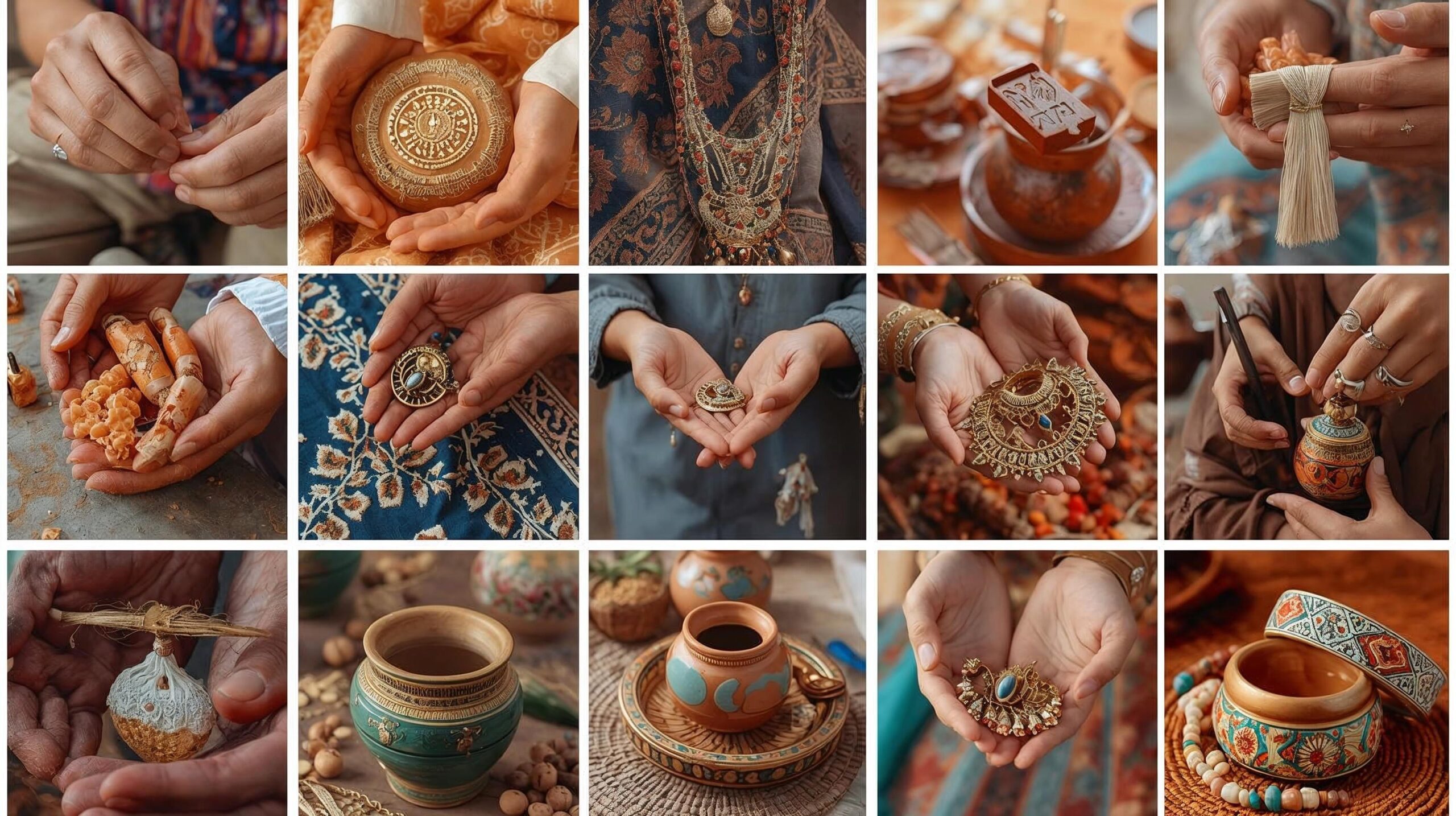
Caring for Your Handmade UAE Garments
Gentle Care for Timeless Beauty
Handmade garments are more than clothing they’re wearable art infused with cultural heritage, craftsmanship, and care. Preserving their integrity means treating them with the same thoughtfulness with which they were made. Whether your item is silk-embroidered, handwoven with Sadu patterns, or stitched in breathable cotton, gentle care is essential to maintain its beauty and lifespan.
Fabric-Specific Care Instructions
Each fabric requires its own approach. Below are guidelines tailored to the most common handmade materials and embellishments found in UAE garments:
Silk & Delicate Embellishments
- Hand wash in cold water with a mild, pH-neutral detergent.
- Do not wring or scrub. Instead, gently press out excess water with a towel.
- Dry cleaning is often the safest option for heavily embellished or metallic-thread items.
- Avoid bleach or harsh chemicals that could damage threads and finishes.
Cotton & Linen
- Machine wash on a gentle cycle using cold water.
- Use a mild detergent and avoid overloading the machine.
- Always air dry to prevent shrinkage and maintain softness.
- Iron inside out on a low setting for best results.
✨ Embroidered Garments (e.g., Al-Qasab)
- Turn items inside out before washing to protect the embroidery.
- Hand wash gently or use a mesh bag for machine washing on delicate mode.
- Avoid wringing, scrubbing, or brushing the embroidery area.
Sadu Weaving (Natural Wool or Goat Hair Fibers)
- Spot clean gently with a damp cloth and mild soap.
- For full cleaning, professional dry cleaning is recommended.
- Never machine wash or tumble dry, as the texture can distort or shrink.
Expert Tip: When in doubt, ask the artisan directly for care advice. Their insights are specific to the techniques and materials they’ve used ensuring you treat the garment the way it was meant to be cherished.
Drying & Storage Tips
Proper drying and storage can dramatically extend the life of your handmade items:
- Air Drying Over Machine Drying
Hang garments on padded hangers or lay flat to dry naturally. Avoid direct sunlight, which can fade dyes. - Store in Breathable Garment Bags
Use cotton or muslin bags rather than plastic covers to protect from dust while allowing air circulation. - Avoid Direct Sunlight
Both during drying and storage, keep delicate items away from prolonged exposure to light to prevent discoloration and fabric weakening.
Addressing Common Concerns
- Color Fading: Use cold water and gentle detergents. For richly dyed items, add a splash of vinegar to the first wash to help set the dye.
- Shrinkage: Avoid hot water or tumble drying. Natural fabrics like cotton and linen are particularly vulnerable.
- Embellishment Damage: Wash inside out, avoid machine agitation, and store flat if possible.
Shipping Your Handmade Treasures Home (for Tourists)
Bringing a piece of the UAE home isn’t always as simple as slipping it into your suitcase. Delicate, handmade garments deserve thoughtful handling especially when being shipped across borders. Whether you’ve picked up a hand-embroidered abaya, a Sadu-woven shawl, or a delicately beaded kaftan, proper packaging and shipping is essential to ensure your treasure arrives safely and intact.
Packaging Your Purchases
Handmade clothing often features delicate stitching, embellishments, or natural fibers that can be damaged by rough handling or improper storage. To preserve your pieces:
- Wrap each item individually in acid-free tissue paper to prevent color transfer and fabric degradation.
- Place garments in sturdy, waterproof boxes or padded envelopes depending on their size and fragility.
- Avoid plastic wrapping directly on fabrics natural fibers need to breathe.
- Add “Fragile: Handmade Garments” labels on the outside if shipping independently.
Pro Tip: Some artisan shops offer secure packaging or shipping options directly ask at the time of purchase.
Choosing a Shipping Method: Courier vs. Post
| Shipping Option | Speed | Tracking & Insurance | Cost | Ideal For |
| DHL / FedEx / Aramex | 2–7 days (global) | Yes (full tracking) | High | Expensive or fragile handmade items |
| Emirates Post Intl. | 7–21 days | Limited tracking | Moderate | Budget-conscious travelers |
| In-store Shipping | Varies | Varies | Varies | Convenient, but confirm tracking & insurance |
- Speed vs. Cost: Express couriers are fast and reliable but come with a premium. If timing isn’t urgent, standard international shipping may suffice.
- Destination Matters: Customs clearance and delivery times vary by country always ask for estimated arrival times.
Customs Declarations & Duties
All international shipments must be declared accurately at customs. This helps avoid delays, fines, or confiscated items:
- Clearly label your parcel as “Handmade Clothing / Personal Garments.”
- Include item value even if it’s a gift.
- Declare “non-commercial use” if not for resale.
Expert Tip: Before shipping, research your home country’s import rules regarding textiles and handmade goods. Some countries apply duties or taxes, even on personal use items.
- Visit official customs websites or speak to courier customer service for updated regulations.
Insurance & Tracking for Peace of Mind
Valuable, one-of-a-kind garments should never be shipped without insurance or tracking.
- Opt for insured shipping to protect against loss or damage.
- Always use tracking numbers and save receipts until delivery is confirmed.
- If you’re shipping multiple items, request signature-on-delivery for added security.
Common Pitfalls & How to Avoid Them
| Problem | Prevention Strategy |
| Lost Packages | Use tracking + confirm recipient address format |
| Unexpected Duties/Taxes | Research import limits in advance |
| Damage in Transit | Wrap items securely with padding and waterproof layers |
| Delayed Deliveries | Ship early and opt for courier services during peak seasons |
Conclusion
Every stitch in a handmade UAE garment tells a story of heritage, craftsmanship, and cultural pride. From the intricate embroidery of Al-Qasab to the earthy charm of Sadu weaving, these creations are more than clothing; they are living traditions passed down through generations.
Key Takeaways from Your Ethical Shopping Journey
- Authenticity matters: Understanding the signs of handmade garments and recognizing traditional styles helps ensure your purchase is genuine.
- Ethical sourcing is essential: Supporting vendors who value transparency and fair practices uplifts the entire artisan community.
- Practical navigation tips: Whether shopping in bustling souks or curated boutiques, being informed empowers smarter, more meaningful purchases.
With the insights and tips from this guide, you’re well-equipped to shop with confidence and cultural respect. You’re not just buying a garment you’re embracing an experience, honoring tradition, and making conscious choices that align with ethical tourism values.
Your Purchase Makes a Difference
Every handmade piece supports local artisans, many of whom rely on this work for their livelihood. Your choices directly contribute to:
- Sustaining ancient textile techniques that might otherwise fade.
- Empowering small businesses, especially women-led cooperatives and family-owned workshops.
- Preserving UAE’s diverse cultural identity through craft.
.
